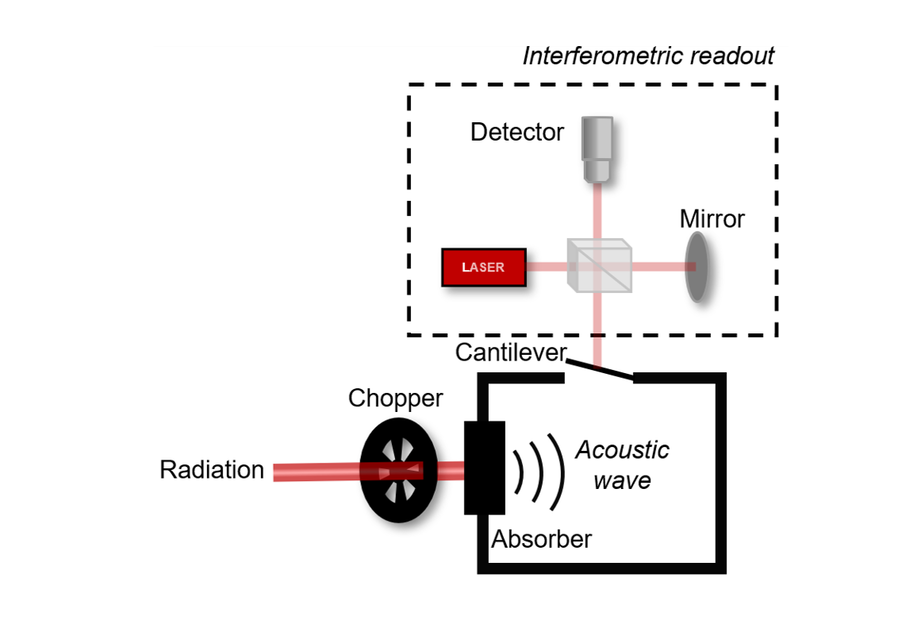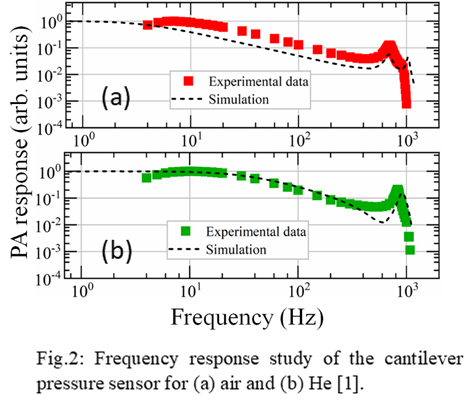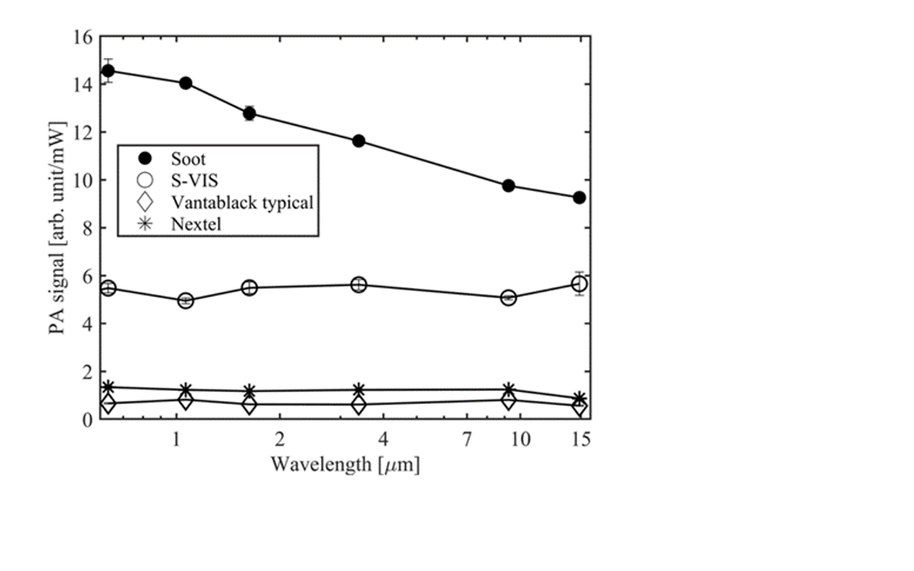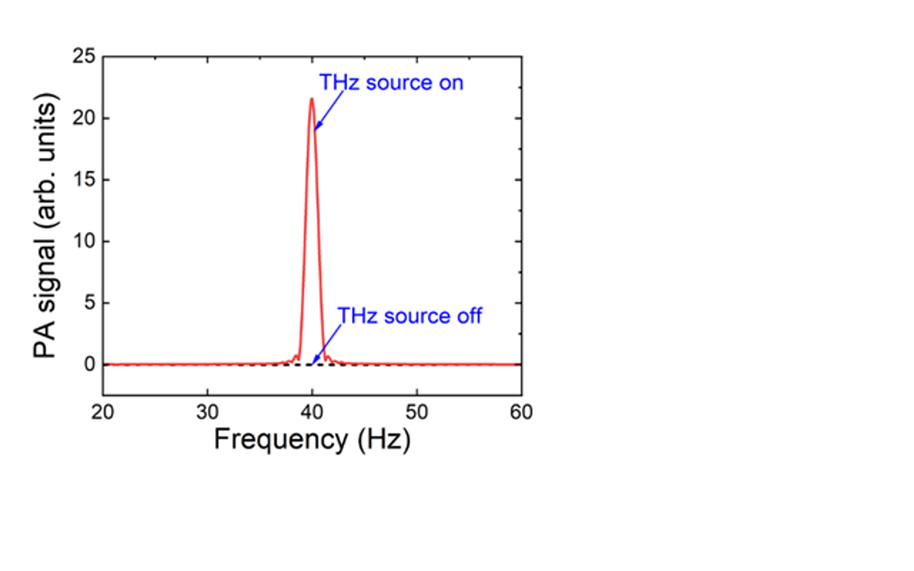Universal electromagnetic radiation detector (UNIDET) (2018–2021)
Detection of power of electromagnetic radiation is essential for nearly all scientific and technical fields that use electromagnetic radiation for either research or industrial purposes including applications in health, safety and security. Because of the lack of a suitable power detection scheme which is capable of sensing incident radiation over a wide spectral range, several other approaches have been developed among which photoacoustic (PA) technology is one of the potential methods.
Objective: The project aims at developing PA radiation power detector with broad spectral sensitivity and large dynamic range.
Methodology: In this project, we developed a cantilever-based PA radiation detector with a linear dynamic range of nearly six orders of magnitude [1] which is capable of sensing a broad spectral range from ultraviolet (UV) to infrared (IR) [1,2]. Fig.1 shows the schematic diagram of the PA radiation detection process. The working principle of the detector mainly consists of three main steps – (a) absorption of chopped radiation by a radiation absorber (b) periodic volume expansion of carrier gas due to heating and corresponding gaseous pressure induced cantilever movement and (c) interferometric detection of cantilever displacement.
Results: We carried out experimental and theoretical studies to develop and improve the PA detection process. The cantilever pressure sensor is one of the key components of the detection system. We studied the cantilever design through a numerical model to improve the detection sensitivity. The difference between the experimental result and the predicted resonance frequency by the model is within 10 % for the cantilever dimension - 6 mm x 0.7 mm x 5 µm (Fig. 2).
We also studied another important component of the detection process, i.e., the absorber materials, in the spectral range from 633 nm to 14.85 µm (Fig. 3) and found that soot shows the highest signal strength [1]. With soot as absorber material and the cantilever with the above-mentioned dimensions, we performed linearity measurement in the UV region, thus, we investigated the detection ability from UV to IR and achieved a linear dynamic range of nearly six orders of magnitude [1].
In our recent studies, we have investigated the applicability of the detection method in the terahertz (THz) region. Fig. 4 shows the performance of the detector for THz detection. At 1.4 THz (~ 214 µm wavelength) the sensitivity of the PA detector with S-VIS (Spray-applied coating of randomly oriented carbon nanotubes) as absorber material is approximately the same as the sensitivity at 0.633 µm.




| Publications in peer-reviewed scientific journals: |
| [1] Sucheta Sharma, Toni Laurila, Jussi Rossi, Juho Uotila, Markku Vainio, Farshid Manoocheri, Erkki Ikonen, ‘Electromagnetic radiation detection using cantilever-based photoacoustic effect: A method for realizing power detectors with broad spectral sensitivity and large dynamic range’, Sensors and Actuators A: Physical, 2021, 113191, ISSN 0924-4247, https://doi.org/10.1016/j.sna.2021.113191. |
| [2] Jussi Rossi, Juho Uotila, Sucheta Sharma, Toni Laurila, Roland Teissier, Alexei Baranov, Erkki Ikonen, Markku Vainio, ‘Photoacoustic characteristics of carbon-based infrared absorbers’, Photoacoustics, Volume 23, 2021, 100265, ISSN 2213-5979, https://doi.org/10.1016/j.pacs.2021.100265. |
Contact persons: Sucheta Sharma, Toni Laurila
- Published:
- Updated: